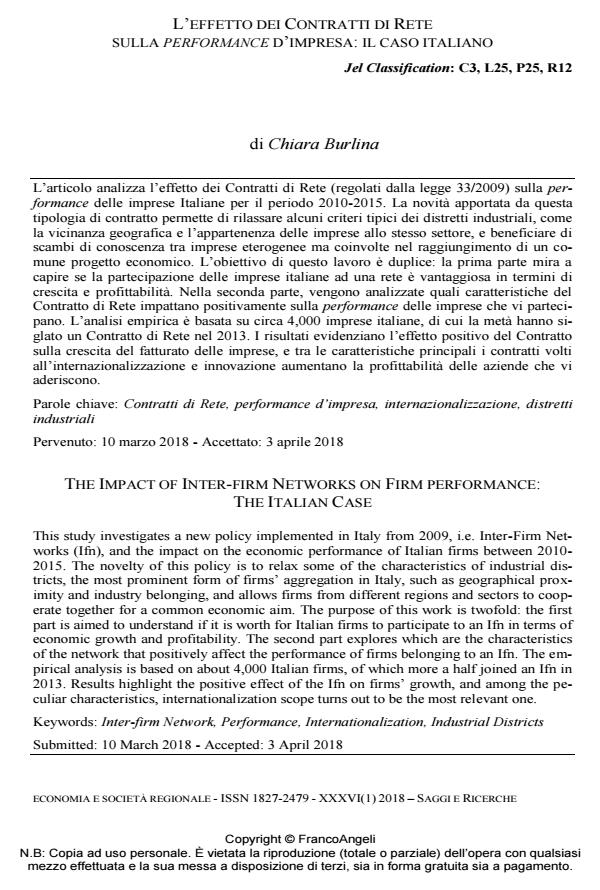The impact of inter-firm networks on firm performance: the italian case
Journal title ECONOMIA E SOCIETÀ REGIONALE
Author/s Chiara Burlina
Publishing Year 2018 Issue 2018/1
Language Italian Pages 15 P. 138-152 File size 320 KB
DOI 10.3280/ES2018-001010
DOI is like a bar code for intellectual property: to have more infomation
click here
Below, you can see the article first page
If you want to buy this article in PDF format, you can do it, following the instructions to buy download credits

FrancoAngeli is member of Publishers International Linking Association, Inc (PILA), a not-for-profit association which run the CrossRef service enabling links to and from online scholarly content.
This study investigates a new policy implemented in Italy from 2009, i.e. Inter-Firm Networks (Ifn), and the impact on the economic performance of Italian firms between 2010-2015. The novelty of this policy is to relax some of the characteristics of industrial districts, the most prominent form of firms’ aggregation in Italy, such as geographical proximity and industry belonging, and allows firms from different regions and sectors to cooperate together for a common economic aim. The purpose of this work is twofold: the first part is aimed to understand if it is worth for Italian firms to participate to an Ifn in terms of economic growth and profitability. The second part explores which are the characteristics of the network that positively affect the performance of firms belonging to an Ifn. The empirical analysis is based on about 4,000 Italian firms, of which more a half joined an Ifn in 2013. Results highlight the positive effect of the Ifn on firms’ growth, and among the peculiar characteristics, internationalization scope turns out to be the most relevant one.
Keywords: Inter-firm Network, Performance, Internationalization, Industrial Districts
Jel codes: C3, L25, P25, R12
Chiara Burlina, L’effetto dei contratti di rete sulla performance d’impresa: il caso italiano in "ECONOMIA E SOCIETÀ REGIONALE " 1/2018, pp 138-152, DOI: 10.3280/ES2018-001010